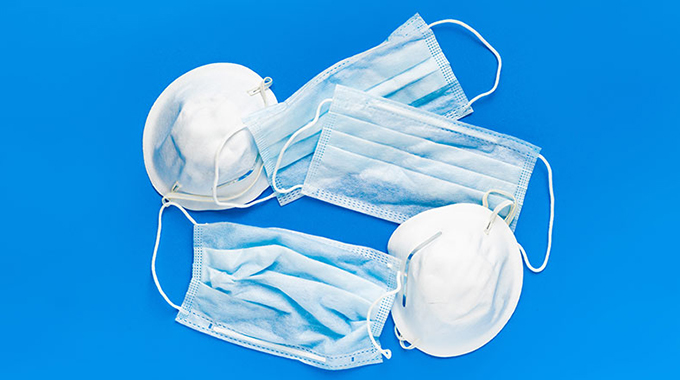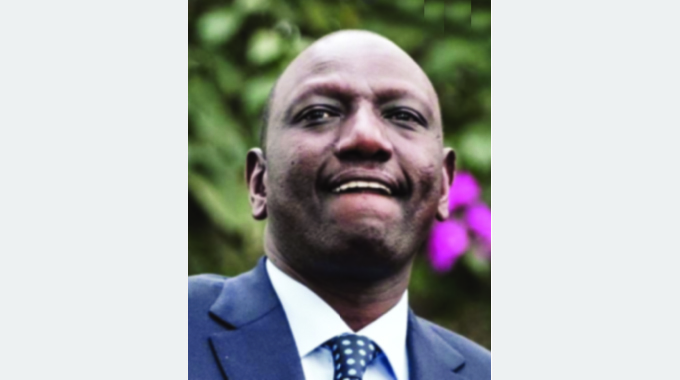Editorial Comment: Relaxation for thrice-vaccinated a preview of the future

The Cabinet decision to allow the thrice-vaccinated to go maskless in outdoor public places is largely the first sign that we might be moving out of the Covid-19 infection zone and one day might see the repeal of lockdown regulations, but does not make that much difference at the moment.
Those who have taken the trouble to have all three shots, and there were 961 728 of them by Tuesday evening when the rule relaxation was announced, amount to just 8,6 percent of the population eligible for vaccination, basically those aged 12 and over so as a proportion of the population they are not that large a group.
Secondly, this group are basically those very keen on protecting themselves against infection, having taken the trouble to line up for all three shots, with the third only really available since the beginning of this year. While the civil service are compelled to accept vaccination, this compulsion is only for two shots, so even in such large blocks of the population the third is still for the keen.
In any case, the thrice-vaccinated still have to carry their card, or presumably a certified copy, and still carry their mask since they will need it to catch a bus or go into a shop or office. And since they are the keenest on protection against infection many are likely to still wear their mask outdoors, at least in crowded environments.
But the temptation to show off their “gold star” will see some at least taking a walk with their mask neatly in their pocket and a happy smile as they show others what is possible.
The other side of the vaccination news, and the reason why we cannot renounce general mask wearing even outdoors, where risks are lower, is the worrying low rates of vaccination 18 months after vaccination became available.
The latest statistics from the Ministry of Health and Child Care show that only just over 12,1 million doses have been given, with just under 6,4 million having entered the vaccination programme by accepting their first shot.
That is just 56,9 percent of the eligible age group with take-up varying from a very worrying 48,2 percent in Harare to the 69,8 percent in Manicaland, although the three Matabeleland provinces are also well over 60 percent, the rural two now doing a little better than urban Bulawayo.
When we come to second shots just 42,3 percent of the eligible age groups have taken this, with Masvingo Province on 33,9 percent marginally below Mashonaland West on 35,7 percent and Harare now third from the bottom on 36,4 percent.
Four provinces, as expected Manicaland and the three Matabeleland provinces, have more than half the eligible age group with two shots with Bulawayo leading the pack on 54,6 percent. Two doses are considered the minimum for any meaningful protection, and those 1,64 million people with one shot who have to go for their second are a worryingly large number. They need to care more, even in the more attentive four western and far eastern keener provinces.
These same four provinces lead the rest in booster shots, and are the only four where the percentage of the eligible population exceeds even 10 percent with Matabeleland North on 13,5 percent, just ahead of its southern neighbour on 13,4 percent, Manicaland on 12,1 percent and Bulawayo on 10,3 percent.
The bottom of the ladder is Mashonaland Central of 6,3 percent and, as expected, Harare on 6,4 percent.
There has been pressure for Zimbabwe to follow the lead of other countries internationally and regionally and remove the mask mandate, at least for outdoors, for everyone. But Zimbabwe has successfully fought Covid-19, with “just” 5885 deaths, by being conservative on prevention and taking advice from the top level of medical professionals, rather than submitting to any populist pressure from those who hope for the best.
In its announcement of the modest relaxation of the mask mandate for the thrice-vaccinated, the Cabinet also announced it wanted far higher percentages of the population to take up their free vaccines. There is a tendency for far more people to come forward when there is a wave of high infection rates, and for this to revert to a trickle when infection rates fall. That is human nature.
But with daily totals for first and second shots now averaging a little over 1 000 a day each, although the keen going for their third shots are hitting close to 2 000 a day, we are hardly touching the surface. We are running at around five percent of what the Health Ministry can handle as routine, without special efforts.
So the vaccination drive is to be ramped up.
The present measles outbreak, admittedly mainly confined to children of those who for religious reasons refuse all medical treatment including vaccination, shows what can happen when people do not take vaccination seriously, hence the emergency decision to revaccinate just about every child to defeat this outbreak.
The same could happen with Covid-19. The WHO has warned that full precautions still must be taken as new varieties can always emerge, especially among the unvaccinated, and in any case we are still far from a Covid-safe world even among the present varieties.
The northern hemisphere is bracing for an unpleasant winter and surges in infection, despite heavy relaxation of rules and mandates.
Zimbabwe came through this last winter, so far, relatively lightly, with far lower levels than “normal” of colds and ordinary flu, so we know the mandates and precautions work.
But those who want to go maskless now have an option to do so: line up and get their shots.
This is perhaps the most important expected result of the modest relaxation of masking for the thrice-vaccinated, showing that experts reckon their risks are sufficiently reduced at least outdoors, although when they get crowded in a poorly-ventilated bus, shop or office with the millions of unvaccinated or partly vaccinated they need more protection.
If we had almost all the estimated 11,4 million 12 pluses with three shots, and by now we could have a huge majority of that group with at least two shots considering the capacity of the vaccination teams with just a couple of million waiting for their third shot as they go through the waiting period after their second, the health experts would almost certainly have given the Cabinet some other advice.
Meanwhile Zimbabwe is working on being better safe than sorry.
Unnecessary funerals are always extremely unpleasant and no one needs more, let alone their own. Progress is in our own hands. The Government has done its job, making sure vaccines are readily available and is now unveiling a Covid-free future. We must respond.










Comments